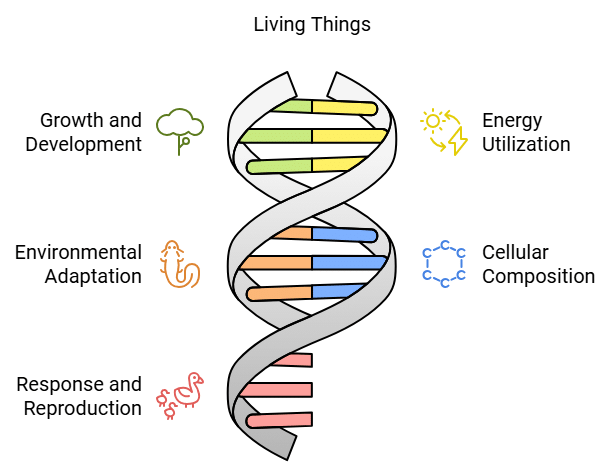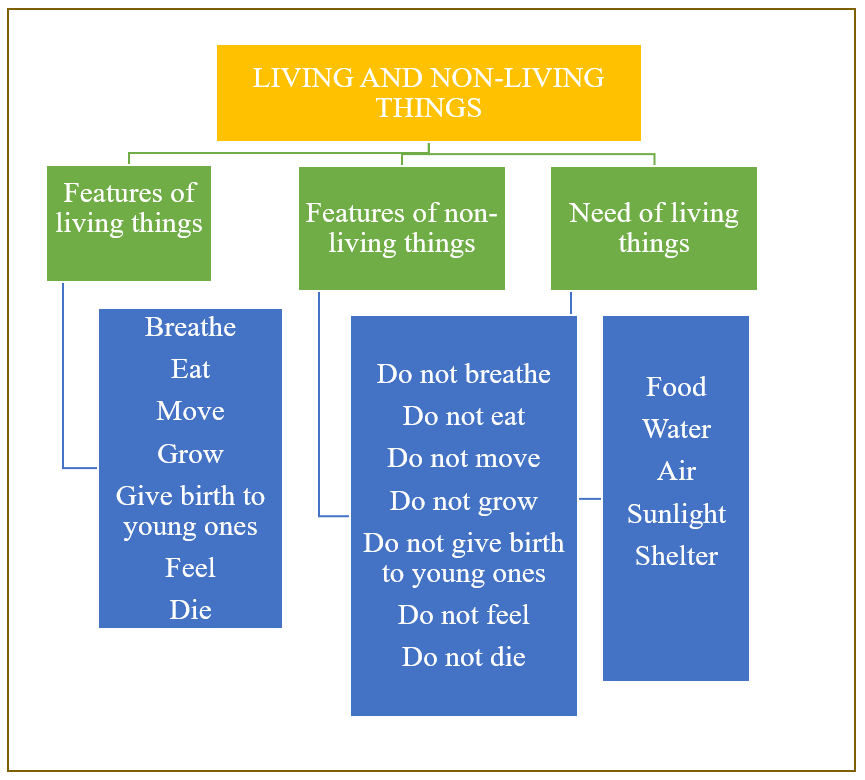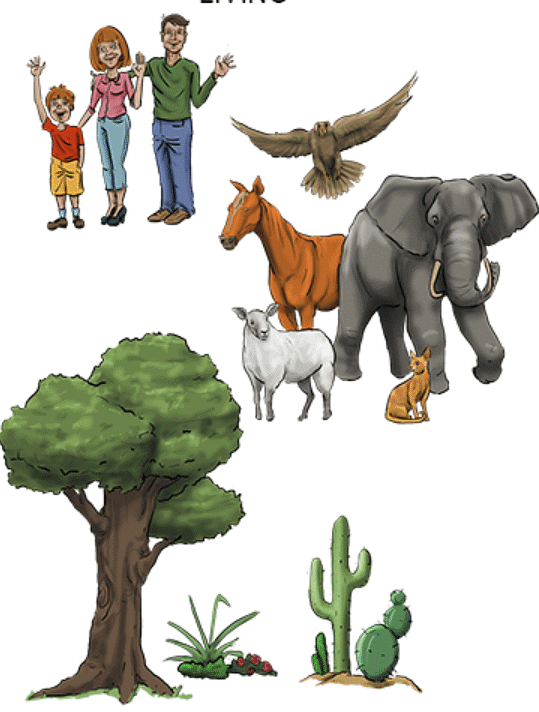Differences between Living & Non-Living things | Science Class 5 PDF Download
Things you’ll learn:
Difference between living and non-living things
Criteria for differentiating living things from non-living things
Difference between living and non-living things
Criteria for differentiating living things from non-living things:
For easy differentiation between living things and non-living things, scientists have come up with traits or characteristics that are unique to them. The criterion for classification is necessary to avoid the wrong grouping. Hence, science developed a basis for classification. Anything that has life is considered a living being.
For example– humans, trees, dogs, etc.
Things which have no life in them are considered non-living.
For example– stone, mountain, watch, etc.
Scientists have discovered a few criteria for differentiating living things from non-living things.

Here are some of them:
Living beings can grow and develop.
Living beings obtain and use energy.
Living beings adapt to their environment.
All living beings are made of one or more cells.
Living beings respond to their environment or stimuli.
All living things excrete to remove waste material from the body.
Living beings have the ability to give birth to their young ones through the process of reproduction.
All living beings require energy to perform different metabolic activities, and they gain energy from food/ nutrition.
All living beings, apart from plants, move from one place to another. This type of movement is called locomotion.
If something obeys a few of the rules, it cannot be categorized as a living thing. It has to follow all the given rules stringently. For example, an icicle, although it grows (increases its mass or length), is still a non-living thing since it cannot reproduce or respond to stimuli.
Non-living things do not have any of the life processes, unlike living beings.
|
42 videos|343 docs|45 tests
|
FAQs on Differences between Living & Non-Living things - Science Class 5
| 1. What are the characteristics of living things? |  |
| 2. What are the main differences between living and non-living things? |  |
| 3. How do living things obtain and use energy? |  |
| 4. Can non-living things grow? |  |
| 5. Do non-living things respond to stimuli? |  |

























